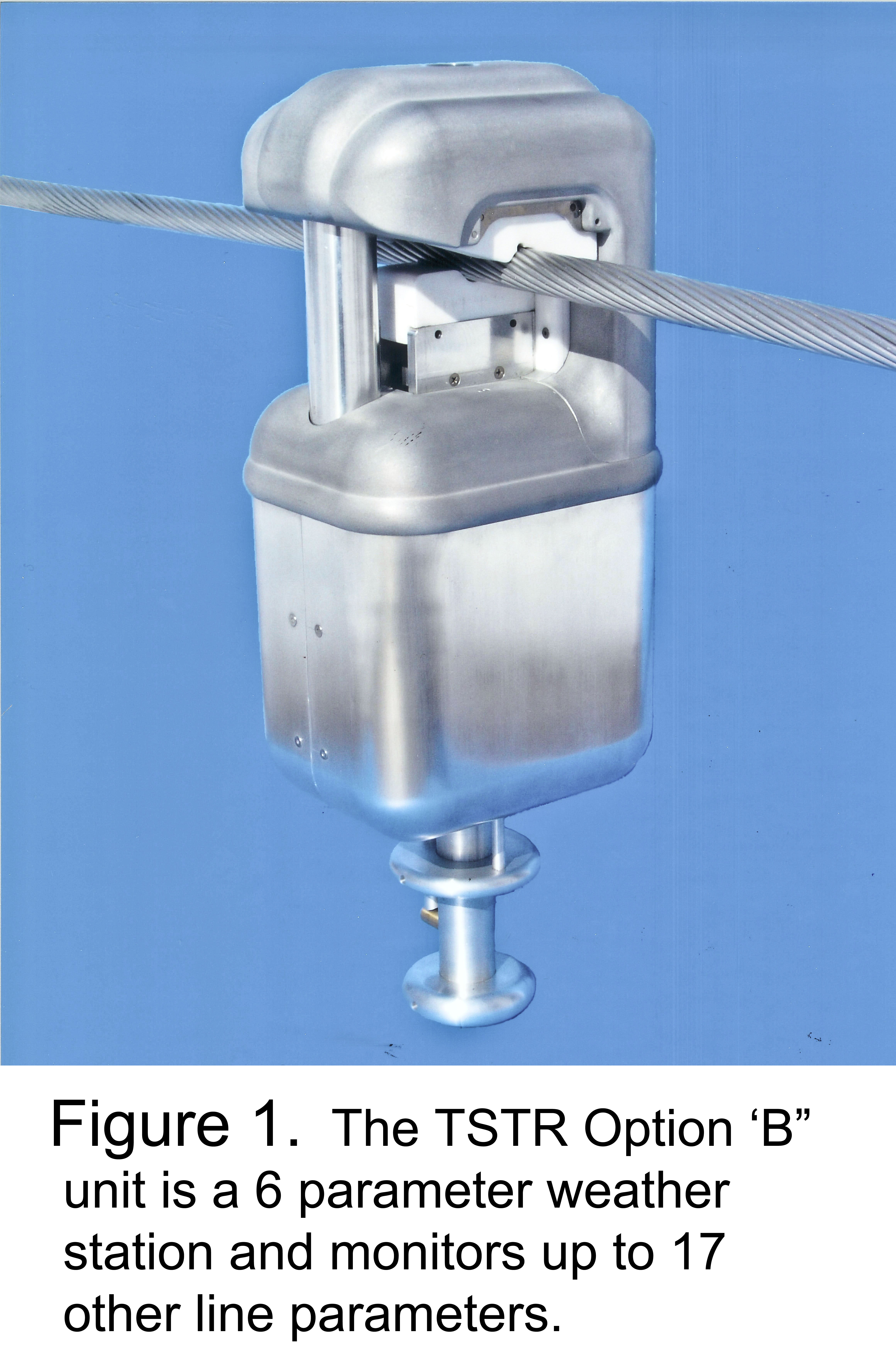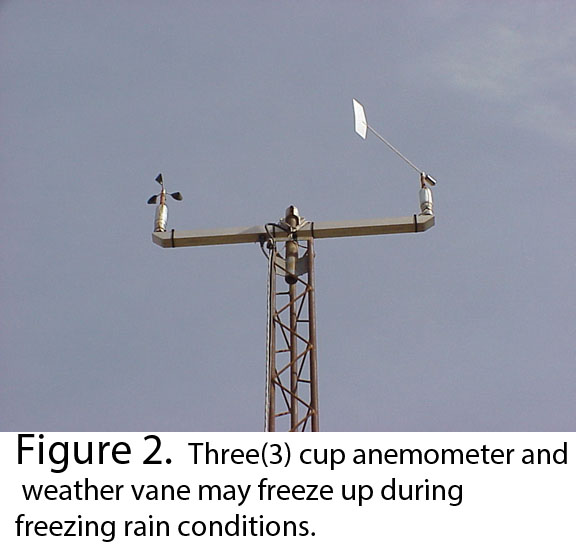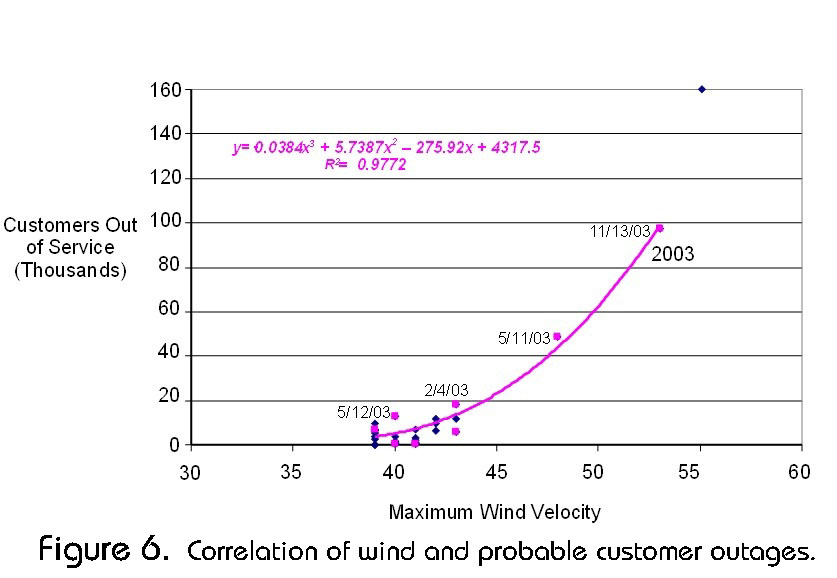
APPLICATIONS:
The list below is the possible applications for the STR Units. Click the appropriate button to get more details on the twelve applications.
1. Weather Station
Measurements:
The Basic STR Units incorporate a weather station feature which measures the ambient temperature, solar radiation, humidity, barometric pressure and lightning stroke current. In addition to the foregoing measured data, Option A Units measure rainfall, and Option B Units measure the lightning stroke voltage. See Figure 1..
temperature, solar radiation, humidity, barometric pressure and lightning stroke current. In addition to the foregoing measured data, Option A Units measure rainfall, and Option B Units measure the lightning stroke voltage. See Figure 1..
Calculations:
 All STR Units incorporate a novel patented method of measuring the effective wind speed (normal to the conductor) from 0.5 mi/h up to
135 mi/h. The traditional mechanical anemometers inherently have inertia which prevent them from accurately measuring low wind speeds and high wind speeds and can freeze up during sleeting rain conditions. See Figure 2.
All STR Units incorporate a novel patented method of measuring the effective wind speed (normal to the conductor) from 0.5 mi/h up to
135 mi/h. The traditional mechanical anemometers inherently have inertia which prevent them from accurately measuring low wind speeds and high wind speeds and can freeze up during sleeting rain conditions. See Figure 2.
Applications:
- Weather data is used to monitor and track hurricanes and forecast severity.
- Real Time Thermal Ratings are calculated for overhead line conductors.
- Lightning stroke data can be used to predict electric power equipment failures and reduce restoration times.
- Real time solar radiation measurements are needed to determine the loading on distribution circuits from interconnected solar panels and control voltage.
- Weather measurements are employed to forecast summer and winter loads on distribution circuits.
- Wind and customer outage data are needed to develop algorithms to predict the number of customers outaged as a function of regional maximum wind data.
Benefits:
 The STR Unit weather station is a feature of all units of which there are additional weather parameters measured with Option A and Option B Units. The STR Unit weather station is a simple and very low cost design. Obviously, it does not require a pole or tower (with an expensive foundation) to which is mounted the weather measuring instrumentation, as is the case for conventional ground based weather stations. See Figure 3. Furthermore, the STR Unit is self-powered from the line conductor current, does not need an external power source, does not use batteries which have to be replaced, nor does it use solar panels, of which the small output power restricts the operating time data can be sent and received. Conventional ground based weather stations require an external low voltage power source for the data acquisition system, and telecommunications hardware. This power source is often quite expensive, depending on the distance to the nearest electric utility source of power. In addition, this supply may be very unreliable, if the source is a rural distribution circuit, which may dictate the use of an expensive uninterruptible power supply with backup generation and batteries.
By comparison, the STR Unit has its own built- in transmitter-receiver and data acquisition system; and has no need for an external power source.
The STR Unit weather station is a feature of all units of which there are additional weather parameters measured with Option A and Option B Units. The STR Unit weather station is a simple and very low cost design. Obviously, it does not require a pole or tower (with an expensive foundation) to which is mounted the weather measuring instrumentation, as is the case for conventional ground based weather stations. See Figure 3. Furthermore, the STR Unit is self-powered from the line conductor current, does not need an external power source, does not use batteries which have to be replaced, nor does it use solar panels, of which the small output power restricts the operating time data can be sent and received. Conventional ground based weather stations require an external low voltage power source for the data acquisition system, and telecommunications hardware. This power source is often quite expensive, depending on the distance to the nearest electric utility source of power. In addition, this supply may be very unreliable, if the source is a rural distribution circuit, which may dictate the use of an expensive uninterruptible power supply with backup generation and batteries.
By comparison, the STR Unit has its own built- in transmitter-receiver and data acquisition system; and has no need for an external power source.
- If the STR Units are mounted on high voltage transmission lines, these lines are often designed to withstand very high wind speeds up to 125 mi/hr of sustained wind and wind gusts up to 160 mi/hr. Therefore, these STR Units are excellent sources of reliable real time weather data that can be used to monitor and track hurricanes. In addition to wind, the Basic STR Unit measures the humidity and barometric pressure which are also key parameters in predicting the severity of hurricanes. See Figure 4.
- The weather data is used to provide ambient temperature, solar radiation, and wind for determining the Real Time Thermal Line Ratings for overhead conductors which can result in an average line rating increase of 20-70%. These increased ratings can be used to avoid opening unnecessarily overloaded lines based on static conventional thermal ratings, which are often lower than real time ratings, and thus weakening the security of the power network.
- Because, in the case of the STR weather station, there are no towers or poles needed for mounting the weather measuring equipment, there are no buildings, or structures needed to house data acquisition equipment, there are no external power sources, or uninterruptible power supplies, there i
 s no land which needs to be purchased or leased to site the weather station shelter and structures, and there is no fence to be built around the perimeter of the site for security, the investment cost of an STR Unit compared to a conventional ground based weather station is negligible. See Figure 5. Furthermore, the maintenance cost of the STR Unit’s weather measuring sensors is a fraction of the cost to maintain the normal weather station instrumentation.
s no land which needs to be purchased or leased to site the weather station shelter and structures, and there is no fence to be built around the perimeter of the site for security, the investment cost of an STR Unit compared to a conventional ground based weather station is negligible. See Figure 5. Furthermore, the maintenance cost of the STR Unit’s weather measuring sensors is a fraction of the cost to maintain the normal weather station instrumentation. - The Basic STR Unit weather station measures the lightning stroke current and Option B Unit measures the lightning stroke voltage and current. Lightning Location and Detection Systems (LLDS) assume a constant velocity of propagation which is dependent on the resistivity of the earth and thus their measurements are an approximation. Furthermore, the values recorded are not indicative of the values the line equipment experienced during any stroke. Conversely, the STR Units measure the actual current and voltage of lightning strokes at the installation point of the unit on the line, which represents precisely what the line equipment experienced which is attached at the same point.
-
The real time solar radiation data from STR Units can be used to predict the power output from solar panels installed on distribution circuits, and provide control data to regulate line voltage.
- The real time weather data available from STR Units can be used to forecast air conditioning and heating loads on distribution circuits and determine the probable maximum circuit loads.
- Lightning data algorithms can be applied to predict the number of pole mounted distribution
 transformers which will fail due to lightning storms and thus the estimated number of replacement units can be shipped to secondary warehouses to insure there are no transformer shortages, which in turn reduces repair times to restore service.
transformers which will fail due to lightning storms and thus the estimated number of replacement units can be shipped to secondary warehouses to insure there are no transformer shortages, which in turn reduces repair times to restore service.- The wind data collected by region can be utilized to predict the number of customers which will be outages and thus pre-schedule the necessary crews to restore power. See Figure 6.











